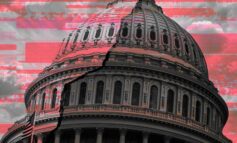Palestinian leaders Mahmoud Abbas and Khaled Mashal met in Cairo last week to try to resolve their differences. The outcome is not totally clear yet.
Mr. Abbas is president of the Palestinian Authority and chief of Fatah, the mainstream political party. He administers a designated area in the Israeli- occupied West Bank. Mashal is chief of the Islamic resistance party, Hamas. After winning the first Palestinian elections in 2006, Hamas forced its way in 2007 to run Gaza. For security, Mashal is based in Syria, and not in Gaza.
After five years of divisive politics, the two rival leaders went to troubled Egypt to “reconcile,” negotiate “unity” and plan overdue legislative and presidential elections. Who heads the future unity government has been, and will be a critical issue for the two rival sides.
Prime Minister Salam Fayyad and President Abbas have run most Palestinian affairs in the West Bank. Mr. Fayyad is a former World Bank economist and an effective statesman. To Hamas leadership, extending Mr. Fayyad’s post would be a problem. Mr. Fayyad is secular, a Washington favorite and a champion of the modern state, without the use of force, in the struggle for independence.
The Cairo meeting lasted only two hours and ended with vague promises. At a follow-up meeting on Dec. 20, the issue of cabinet leadership is supposed to be resolved. Mr. Fayyad remains a possible deal-breaker.
Facing reporters, Mr. Abbas tried to minimize the partial failure of last week’s meeting, saying, “There are no differences between us at all, on any issue.” When the fate of national unity rests on one personality, it is an indication that the process of planning is flawed.
Beyond the choice of the prime minister lies a deeper Palestinian domestic problem. The root cause of national disunity is confusion over strategy. Without clout, Fatah seeks to achieve peace through negotiations. Hamas, without a symmetrical power, continues to mobilize to “liberate Palestine” through force. While Fatah is too dependent on promises from the West, Hamas is too close to troubled Middle East regimes.
The leaders came to negotiate after seeing their international alliances threatened. Hamas fears losing the support of Syria and Iran, as these two regimes face growing domestic, regional and international pressure. The Palestinian Authority feels abandoned by the Obama administration and humiliated by the Israeli government, which held back until this week from reimbursing the PA for (collected) taxes contributed by Palestinians. Washington is about to cut funding to the West Bank government of the PA.
Nonetheless, there are signs of hope. In challenging the occupation, Palestinians are gradually moving in the direction of non-violence. A September poll by Hebrew University in Jerusalem and the Palestinian Policy and Survey Research Center in Ramallah indicated that 67 percent believe that civil disobedience or negotiation, rather than armed struggle, is bound to force Israel to withdraw from the occupied territories.
Neither Mr. Abbas nor Mashal can unite Palestinians. If there is one leader who could, it would be Marwan Barghouti. From his Israeli cell, Barghouti issued a letter in July 2006 appealing for peace. His plan is based on a two-state solution, 1967 borders and acceptance of a state with a Jewish character. The letter, which was intended to be circulated for approval by all Palestinians through a referendum, was signed by inmates representing Fatah, Hamas and Islamic Jihad. The referendum idea, which President Abbas favored, was soon overshadowed by negative events. A promising initiative was nipped in the bud.
Would Mr. Abbas and Mashal consider reviving Barghouti’s referendum as part of the election process, in order to unite Palestine at the grass-roots? More important, is Israel ready to free Barghouti? It will take more than handshaking and an embrace for Palestinians to settle their deep differences.
Ghassan Michel Rubeiz, a winter resident of Palm Beach Gardens, has written for “The Christian Science Monitor” and The Arab American News.





Leave a Reply